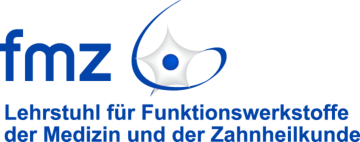Hierarchical Systems
In their natural environment, cells are surrounded by a matrix that enables their survival and determines their adhesion, growth, proliferation, migration, differentiation and function. Therefore, soluble factors that are reversible immobilized in the so called extracellular matrix (ECM) as well as specifically acting binding moieties are of utmost importance. Main components of the ECM are hydrogels and insoluble protein fibres that serve as mechanical scaffold for the cells. Another important structural element are basal membranes, ultrathin separation layers between tissues.
A core activity at FMZ is the preparation and evaluation of biodegradable materials and structures that mimic the ECM as closely as possible in its morphology, biochemical function and hierarchical composition. Modified biopolymers as well as biocompatible functional polymers are used as components for coatings, hydrogels and nanofibrous constructs to achieve this goal. For the generation of hierarchy, methods such as electrospinning and rapid-prototyping techniques are applied.
ECM
Another focus area of research are injectable systems for in-situ Tissue Engineering. For this, biocompatible cross-linking chemistries are essential that do not negatively affect cell viability. Examples for this are Michael-Addition or click-chemistry. Finally, the rheological properties of these systems have to be controlled properly.



